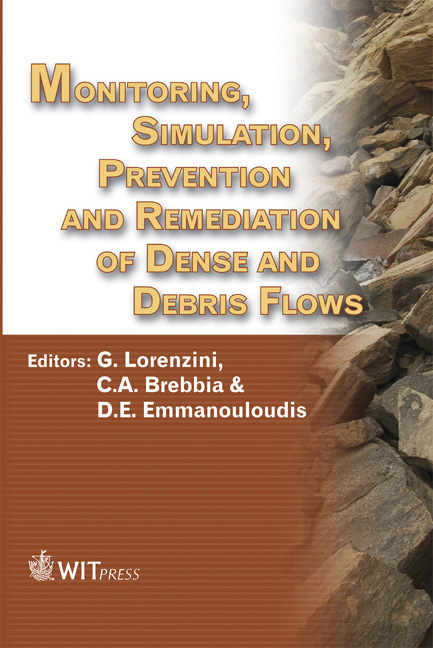Prediction Of Landslide-induced Debris Flow Hydrograph: The Atsumari Debris Flow Disaster In Japan
Price
Free (open access)
Transaction
Volume
90
Pages
10
Published
2006
Size
939 kb
Paper DOI
10.2495/DEB060031
Copyright
WIT Press
Author(s)
H. Takaoka, H. Hashimoto, S. Ikematsu & M. Hikida
Abstract
Landslides sometimes occur on mountain slopes by heavy rains. Some of them change into debris flows and then move into mountain rivers. The debris flows erode the river bed and increase their discharge. Prediction of debris flow discharge becomes important for the simulation of flooding debris flows along the river. The purpose of the present study is to develop a prediction model of the landslide-induced debris flow hydrograph. This study is composed of three steps. First, we assume a transformation model of landslide into debris flow. Second, we calculate the development process of debris flow in the middle reach and determine the debris flow discharge. Finally, we simulate the flooding process of debris flow in the downstream reach. Keywords: Atsumari River, debris flow, landslide, bed variation. 1 Introduction There was a continuous heavy rain in Minamata City, Kumamoto Prefecture, Japan on July 20, 2003 (fig. 1). Especially, at the Atsumari River basin in the Minamata City as shown in fig. 2, the maximum hourly and accumulated rainfall was 91 mm/h and 323 mm, respectively (fig. 3). As a result, a large-scale of landslide occurred on the right-hand side slope of the Atsumari River. The landslide changed into debris flow. During the movement in the middle reach at steep slope, the debris flow eroded the river bed and bank and increased its flow discharge. In the downstream reach at mild slopes, the debris flow caused sediment deposition and moved over river bank. The debris flow broke several
Keywords
Atsumari River, debris flow, landslide, bed variation.





